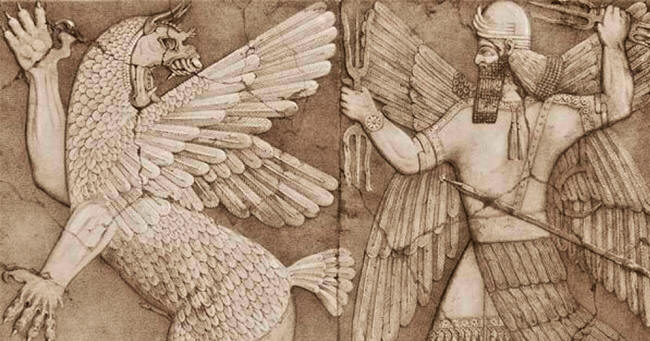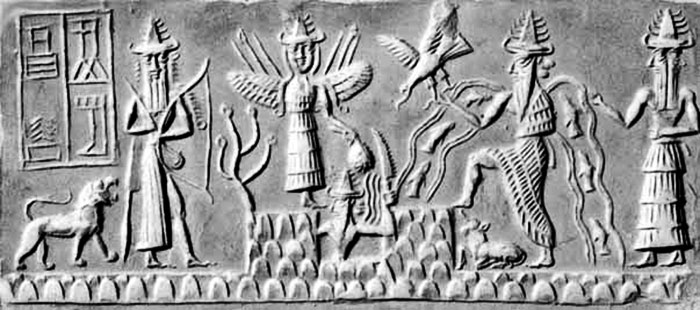|
February 26, 2019 from Ancient-Origins Website
Sumerian chaos monster and sun god.
Wikipedia
Sumerians created an advanced civilization with its own system of elaborate language and writing, architecture and arts, astronomy and mathematics. Their religious system was a complex one comprised of hundreds of gods.
According to the ancient
texts, each Sumerian city was guarded by its own god; and while
humans and gods used to live together, the humans were servants to
the gods.
Sumerian mythology claims that, in the beginning, human-like gods ruled over Earth...
When they came to the
Earth, there was much work to be done and these gods toiled the
soil, digging to make it habitable and mining its minerals.
Anu, the god of gods, agreed that their labour was too great.
His son Enki, or Ea, proposed to create man to bear the labour, and so, with the help of his half-sister Ninki, he did. A god was put to death, and his body and blood was mixed with clay.
From that material the first human being was created, in likeness to the gods.
This first man was created in Eden, a Sumerian word which means 'flat terrain'.
In the
Epic of Gilgamesh, Eden is
mentioned as the garden of the gods and is located somewhere in
Mesopotamia between the Tigris and Euphrates rivers.
Enki in the creation myth.
Thus, Adapa was created as a fully functional and independent human being. This 'modification' was done without the approval of Enki's brother, Enlil, and a conflict between the gods began.
Enlil became the adversary of man, and the Sumerian tablet mentions that men served gods and went through much hardship and suffering. Adapa, with the help of Enki, ascended to Anu where he failed to answer a question about 'the bread and water of life'.
Opinions vary on the
similarities between this creation story and the biblical story
of Adam and Eve in Eden. References
|



